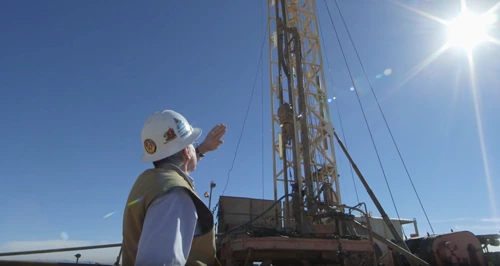
Consider this story. It is March 2000. In an area dependent on groundwater for water supplies, a landowner intends to utilize groundwater to irrigate a golf course, fill five lakes and meet other development water needs. Disputes arise regarding the impacts this groundwater pumping will have on other wells in the area. Officials request to see the hydrologic data supporting the landowner’s conclusions that pumping plans will not endanger the wells of surrounding landowners. The requests are denied because ordinances regarding water use do not apply to this particular landowner.
Fast forward to spring 2001. As the landowner’s large wells were being completed and utilized, the drying of nearby wells begins. Over the next year, the developer continues to assert there is enough groundwater for at least 50 years and that the new wells rely on a totally separate, abundant aquifer.
One year later, the community discovers that the landowner, who had drilled large wells and assured nearby well owners that the drilling has had no impact on their wells, is trucking in water. The landowner’s own wells have run into production difficulties. Due to the critical groundwater situation, the landowner seeks an emergency declaration and exemption from environmental review of plans to obtain additional water sources. Securing bypass of environmental reviews fails. The debate over these plans continues.
I read about this situation recently while visiting San Diego. The events and details are particular to the activities of a specific Indian Nation, with California state laws and San Diego County ordinances part of the issue — and I expect subject to dispute. The story, however, has direct relevance to Arizona.
Outside Active Management Areas, wells other than recovery wells do not require Arizona Department of Water Resources permitting. Only a notice of intent to drill is required. ADWR’s (temporary) Well Spacing and Well Impact Rules, which require a demonstration that new wells do not cause “unreasonably increasing damage to surrounding land or other water users from the concentration of wells,” do not apply. Outside AMAs, there also is no requirement that new developments show they have an assured water supply for 100 years.
At the top of the list of prioritized major rural water management issues, the Arizona Watershed Alliance listed “lack of local or multi-jurisdictional authority, with enforcement capability, to regulate development activities based on available and sustainable water supplies.” The link between water and growth (development) is clear. It’s what to do about the link from a regulatory perspective that is elusive. Should there be greater oversight of well drilling in non-AMA areas? In other words, should some type of well spacing and well impact rules apply? Should assured water supply requirements be established for these areas as well?
It is recognized that the prospect of additional regulation of well drilling is not welcome in many parts of Arizona. Requirements to show absence of adverse effects of well drilling are viewed by some as an infringement of property rights. Yet absence of state law or local ordinances cannot trump the laws of nature. Groundwater supplies must be considered as areas grow. The right to use land is not equivalent to the right to pump other landowners’ wells dry. How can situations like that described above be avoided?
Counties with populations greater than 125,000 must include planning for water resources in their comprehensive plans. The statutes require that the plans address the following: “(a) The known legally and physically available surface water, groundwater and effluent supplies; (b) The demand for water that will result from future growth projected in the county plan, added to existing uses; and (c) An analysis of how the demand for water that will result from future growth ... will be served by the water supplies identified ... or a plan to obtain additional necessary water supplies.” Yet, the statute also states that the water resources element of the plan does not require new independent hydrologic studies.
If the aversion is really to state-level regulation of water in areas not already under ADWR jurisdiction, perhaps serious consideration should be given to county or regional level regulation. (I write this knowing this concept will elicit howls from some.) And this consideration ought to occur soon. But if the aversion is to regulation no matter what the regulation and who is responsible for it, then we need to do a reality check.
Sustainable economies require sustainable water supplies. With the Drought Management Task Force addressing the effects of both short-term and possible long-term drought, we must support development and implementation of long-term water supply plans throughout Arizona. In doing so, we should not ignore the possibility that these long-term water supply plans will have some regulatory elements to them. Having growth depend on sustainable water supplies is in the interest of all property owners, from the individual home owner to the owner of large tracts of developable land.
Public policy development involves a lot of give and take, particularly when much is at stake. The manner in which Arizona grows is important. It is in the public interest that water issues be resolved. We are close to settling Indian water rights claims that affect both large metropolitan areas in the state. Approval of the settlements has widespread support. It is important that, as the watershed groups and others consider their options and opportunities to deal with water resource issues, the laws of nature not be ignored.
Everyone wants to avoid dry wells.

